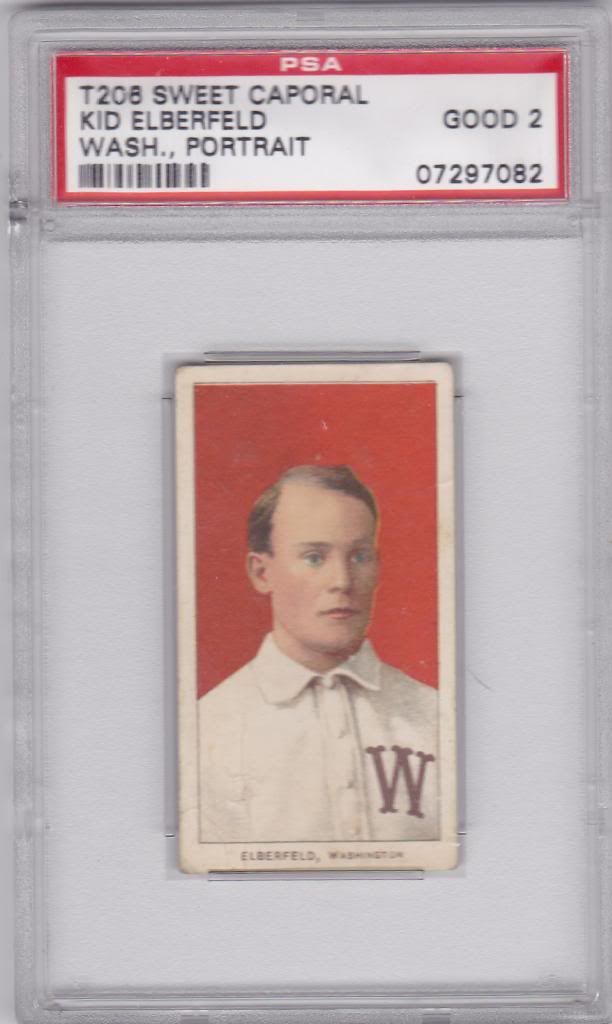Of course, even after you remove these cards from the equation, there are also cards which are only somewhat rare and of interest to set builders, unless you are a big Carl Lundgren or Bill Dahlen fan. Or Kid Elberfeld.
Kid Elberfeld was a shortstop who spent most of his career with the New York Highlanders. Elberfeld was a pugnacious player who earned the nickname Kid as a similar fashion to boxers of the day for his willingness to mix it up. However, after the 1909 season with his career winding down, Elberfeld was traded to the Washington Senators.
As part of the T206 set, Elberfeld already had a card, with a lithograph taken from the Carl Horner cabinet collection of baseball photographs. (A cabinet is a photograph style from the 1870s to the 1910s, generally printed on a 4X6 piece of cardboard, identifiying the photographer.) Traded, Elberfeld's portrait was changed, taking the NY off the portrait and replacing it with a W. As it was towards the end of the print run, there is a very limited amount of the cards made, making it quite the short print. In fact, it is the least common card needed to complete the T206 set to 518 cards.
Of course, for a player of Elberfeld's stature, they made another card for him, with him fielding. This more common T206 Elberfeld served as the image for 2010 Topps T206 Elberfeld, instead of the rare portrait card, which keeps his name alive amongst baseball card collectors. Additionally, cabinet photos would be very jarring in a modern set, as you imagine your favorite ballplayer, slicked down hair, facing right with a solid color background. Not evocative of the action we've come to expect on a modern card.
Knowing this, I had wisely worked to obtain the short prints whenever possible, snapping them on message boards and eBay alike whenever the opportunity presented itself. Doing so, I was always falling short on one card, Kid Elberfeld Portrait Washington. In fact, last week, I was oh so close to picking one up in auction on eBay, but my very strong bid was overtaken at the zero hour.
With 499 cards in my set, I went back to a copy of the card I made an offer on the week before. Making an offer which was higher than I anticipated paying for the card when I started this set a few years ago, I waited. And waited. And sent a payment, with the below card finally arriving this weekend. Which while great, is only interesting because it is a necessary card to complete a set, making it one of the earlier shortprints I can think of.

Realistically, I hate short prints. Especially artificial short prints. The rarity of the card doesn't increase the enjoyment of ownership in my book. Equal distribution of cards just makes more sense. I hate paying that premium because there are fewer of them and it penalizes us set collectors, who are completionists at heart and need to have them all. But with cards printed 100 years ago, this was not some act of malice, but an attempt to keep an older set current as life marched on, so I can at least appreciate that aspect of what was done.
Of course, it also allows me to prepare to sprint to the finish, since there are only reachable roadblocks left on my path to completion.
congrats on the milestone and pickup!
ReplyDelete